Table of Contents
Come join us now, and enjoy playing your beloved music and browse through great scores of every level and styles!
Can’t find the songbook you’re looking for? Please, email us at: sheetmusiclibrarypdf@gmail.com We’d like to help you!
Dire Straits Brothers In Arms Songbook (Piano, guitar & vocal).

Best Sheet Music download from our Library.
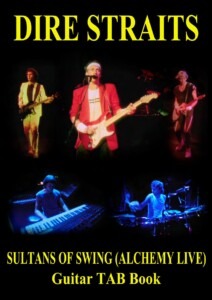

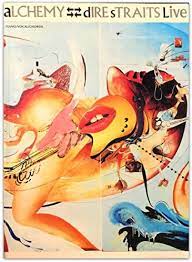





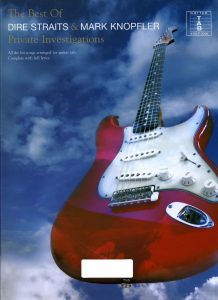
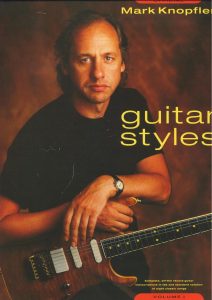
Please, subscribe to our Library.
If you are already a subscriber, please, check our NEW SCORES’ page every month for new sheet music. THANK YOU!
Dire Straits: Precision, Poetry, and the Quiet Revolution of Rock
Dire Straits wasn’t just a rock band; they were an anomaly. Emerging in the late 1970s amidst the raw energy of punk and the burgeoning flamboyance of new wave, they offered something disarmingly different: clarity, craftsmanship, and a deeply literate form of rock music built on the bedrock of Mark Knopfler’s unmistakable guitar work. Their journey, from London pub circuits to global superstardom and an elegant dissolution, remains a testament to the power of understated virtuosity and timeless songwriting.
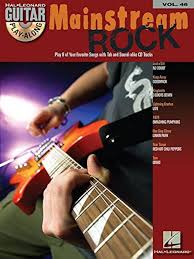
Humble Beginnings: From Deptford to Demo Tape (1977-1978)
The story starts in the unassuming surroundings of Deptford, South London. Brothers Mark (vocals, lead guitar) and David Knopfler (rhythm guitar), disillusioned by their respective careers (journalism and social work), found solace in music. Bassist John Illsley and drummer Pick Withers completed the initial lineup. Strapped for cash (“dire straits” indeed), they honed their sound in local pubs, playing a style that immediately set them apart. Rejecting the distortion and aggression prevalent at the time, Mark Knopfler’s clean, fluid, finger-picked Fender Stratocaster sound became their sonic signature. Influenced by blues (J.J. Cale, B.B. King), country, folk, and jazz, their music possessed a rare sophistication and groove.
A pivotal moment came with a low-fidelity demo tape recorded in 1977. Featuring an early version of “Sultans of Swing,” the tape found its way to BBC Radio London DJ Charlie Gillett, who championed it relentlessly. This led to a record deal with Vertigo (Phonogram) and the rapid recording of their self-titled debut album.
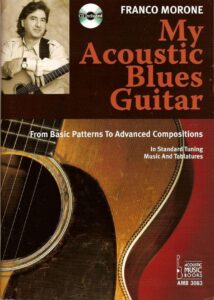
Breakthrough and Defining a Sound: “Dire Straits” & “Communiqué” (1978-1979)
Released in 1978, Dire Straits was a revelation. Its clean production (a hallmark throughout their career) allowed every nuance to shine, particularly Knopfler’s intricate guitar lines and his distinctive, conversational, slightly world-weary vocals. “Down to the Waterline” and “Wild West End” painted evocative pictures of urban life, but it was “Sultans of Swing” that became the phenomenon. Its tale of a struggling jazz band, propelled by Knopfler’s now-iconic, chiming guitar solo, became a global hit. The album’s success was organic, driven by word-of-mouth and radio play rather than hype, establishing their core sound: narrative-driven lyrics, intricate yet accessible guitar work, tight rhythms, and an atmospheric, often cinematic quality.
1979’s Communiqué, recorded in the Bahamas, refined this formula. While sometimes viewed as a rushed sequel, it contained gems like the atmospheric “Lady Writer,” the brooding “Where Do You Think You’re Going?” and the title track. It showcased Knopfler’s growing confidence as a storyteller and guitarist, further solidifying their international appeal. David Knopfler departed after this album, replaced by Hal Lindes, and keyboardist Alan Clark became a permanent fixture, adding crucial texture.
Artistic Expansion: “Making Movies” & “Love Over Gold” (1980-1982)
The 1980s marked a period of significant artistic growth. Making Movies (1980), produced with Jimmy Iovine and featuring E Street Band keyboardist Roy Bittan, was a quantum leap. The sound became grander, more cinematic, infused with a Springsteen-esque sense of drama and romance. Epic tracks like “Romeo and Juliet” (a heart-wrenching masterpiece), “Tunnel of Love” (with its stunning, evocative intro), and “Skateaway” demonstrated Knopfler’s maturing songwriting genius. The album was a critical and commercial triumph, showcasing the band’s ability to blend rock muscle with poetic lyricism and intricate arrangements.
This ambition reached its zenith with 1982’s Love Over Gold. Primarily written and produced solely by Mark Knopfler, it was a bold, progressive statement. Dominated by lengthy, complex compositions like the 14-minute atmospheric epic “Telegraph Road” and the tense, synth-driven “Industrial Disease,” it pushed boundaries. While less immediate than its predecessor, it was a showcase for Knopfler’s compositional daring and the band’s exceptional musicianship, particularly Illsley and drummer Terry Williams (who replaced Pick Withers). This period cemented Dire Straits as serious artists, unafraid to challenge their audience.
Global Domination: “Brothers in Arms” & The MTV Era (1985-1988)
If Love Over Gold was ambitious, 1985’s Brothers in Arms was a cultural juggernaut. Embracing the nascent CD format and the power of MTV, it became one of the best-selling albums of all time. Sonically pristine, it masterfully blended their core sound with contemporary production (digital recording, synthesizers) and irresistible pop hooks.
- “Money for Nothing”: Featuring Sting’s iconic falsetto intro (“I want my MTV”), its controversial lyrics satirizing rock star excess, and its groundbreaking computer-animated video, became an anthem. Knopfler’s snarling guitar riff was instantly recognizable worldwide.
- “Walk of Life”: An irresistibly upbeat, rock ‘n’ roll-infused romp that dominated radio.
- “So Far Away”: A smooth, melancholic ballad showcasing Knopfler’s melodic guitar phrasing.
- The Title Track: A poignant, anti-war ballad highlighting Knopfler’s lyrical depth and evocative playing.
Brothers in Arms wasn’t just successful; it defined mid-80s rock. It won Grammy Awards, dominated charts globally, and became a benchmark for CD sound quality. The accompanying tour was one of the largest and most successful of the decade. Dire Straits had reached the absolute pinnacle.
The Gentle Fade: Disbandment and Legacy (1988-Present)
The sheer scale of Brothers in Arms success took its toll. Mark Knopfler, always a reluctant superstar, craved artistic freedom beyond the Dire Straits juggernaut. After a massive world tour, the band effectively went on hiatus. Knopfler focused on film scores (Local Hero, Cal, The Princess Bride) and launched a prolific and diverse solo career.
A reformed lineup (without David Knopfler) released one final album, On Every Street (1991), and embarked on another huge tour. While commercially successful, it lacked the spark of their peak and felt like an epilogue. By 1995, Dire Straits was officially dissolved. Mark Knopfler has consistently stated there are no plans for a reunion, preferring to move forward solo.
The Enduring Legacy: Why Dire Straits Still Resonate
Dire Straits’ legacy is profound and multifaceted:
- Mark Knopfler’s Guitar Voice: His clean, finger-picked style, devoid of picks or heavy distortion, is instantly recognizable. His solos weren’t just displays of speed; they were melodic narratives, full of feeling, space, and impeccable phrasing. He redefined what a rock guitar hero could sound like.
- Songwriting Craft: Knopfler’s lyrics were literate, observational, and evocative. He told stories of ordinary people (“Sultans,” “Romeo and Juliet”), social commentary (“Industrial Disease,” “Brothers in Arms”), romance, and travel with wit, detail, and a touch of melancholy. His compositions blended rock, blues, country, folk, and jazz seamlessly.
- Sonic Fidelity: Their commitment to clean, detailed production made their albums audiophile benchmarks. Every instrument was distinct, allowing the intricate interplay and Knopfler’s guitar to shine. This clarity has ensured their music hasn’t dated sonically.
- Musicianship: They were a supremely tight unit. John Illsley’s melodic bass provided a rock-solid foundation, while keyboardists like Alan Clark added rich textures. Their drummers (Withers, Williams) provided nuanced grooves, never overpowering.
- Timelessness: Lacking the overt fashion or production tropes of their eras, their focus on songcraft and musicianship gives their best work an enduring quality. “Sultans of Swing” or “Romeo and Juliet” sound as fresh and powerful today as they did decades ago.
- Influence: Countless guitarists cite Knopfler as a major influence. Their success proved sophisticated, well-played rock could achieve massive popularity without sacrificing artistry.
Dire Straits carved a unique path. They achieved monumental success not through volume or image, but through quiet confidence, exceptional skill, and songs that resonated deeply. They were the “Sultans of Swing” who became kings of the world, all while maintaining an air of understated cool. Their music remains a masterclass in precision, poetry, and the enduring power of a perfectly played guitar. In a world often dominated by noise and spectacle, Dire Straits proved that sometimes, the most revolutionary sound is the one played with clarity, heart, and undeniable mastery.
Browse in the Library:
Or browse in the categories menus & download the Library Catalog PDF:
Dire Straits’ Brothers in Arms: The Album That Conquered the World
Released in May 1985, Brothers in Arms wasn’t just Dire Straits’ biggest album—it became a cultural landmark. It captured the zenith of the band’s career, fused cutting-edge technology with timeless songwriting, and dominated the nascent MTV and CD era. Here’s a deep dive into this iconic record:
The Backdrop: Ambition Meets Innovation
- Technological Pioneer: Brothers in Arms was one of the first albums recorded digitally (using Sony’s 24-track DASH recorder). This gave it unprecedented clarity, making it a reference disc for testing CD players and hi-fi systems. Audiophiles hailed its pristine, dynamic sound.
- MTV Revolution: The album’s release coincided with MTV’s global rise. Dire Straits embraced the medium, creating visually striking videos that became inseparable from the music.
- Band Evolution: By 1985, Mark Knopfler was the undisputed leader. The core lineup included John Illsley (bass), Alan Clark (keyboards), Guy Fletcher (keyboards/synths), and Omar Hakim/Terry Williams (drums). Sting even contributed backing vocals.
Track-by-Track: Anatomy of a Masterpiece
- “So Far Away”
- A smooth, melancholic opener with Knopfler’s signature fingerpicking. Lyrics lament distance and disconnection—a theme echoing the band’s relentless touring.
- Signature Moment: The soaring guitar solo, blending bluesy ache with melodic precision.
- “Money for Nothing”
- The Game-Changer: Built around a stolen guitar riff (inspired by a store clerk’s rant), it satirizes rock-star excess and MTV culture. Sting’s falsetto hook (“I want my MTV”) became iconic.
- Groundbreaking Video: One of the first fully computer-animated music videos (by Ian Pearson), winning MTV Awards and pushing visual boundaries.
- Controversy: Later criticized for derogatory lyrics, though Knopfler framed them as “reported speech” from a working-class perspective.
- “Walk of Life”
- An upbeat, Jerry Lee Lewis-style rocker with a relentless boogie-woogie piano riff. Lyrics celebrate street musicians (“Johnny’s playin’ the honky-tonk”).
- Impact: A global smash, topping charts in 10+ countries. Proved Dire Straits could craft pure pop joy.
- “Your Latest Trick”
- Jazz-noir sophistication featuring saxophone (Michael Brecker) and muted trumpet. Evokes late-night regret in smoky bars.
- Production Note: The lush arrangement showcased Knopfler’s love for film scores.
- “Why Worry”
- A lullaby-like ballad with Hawaiian slide guitar touches. Gentle and reassuring, it offered respite from the album’s darker themes.
- “Ride Across the River”
- A cinematic, Latin-tinged epic with flamenco guitars, synths, and jungle soundscapes. Lyrics hint at Central American conflicts—a subtle political statement.
- “The Man’s Too Strong”
- Acoustic-driven folk-rock with a confessional narrative. A soldier’s guilt-ridden monologue, highlighting Knopfler’s storytelling prowess.
- “One World”
- A reggae-infused critique of nationalism (“One world, it’s a battleground”). Features intricate guitar interplay and a laid-back groove.
- “Brothers in Arms”
- The Heart of the Album: A haunting, anti-war masterpiece. Minimalist guitar, atmospheric synths, and Knopfler’s weary vocals depict soldiers bonded by tragedy.
- Legacy: Used in films (The West Wing, Spy Game) and memorial services. Its emotional weight remains unparalleled.
Why It Dominated the World
- Commercial Juggernaut:
- Sold over 30 million copies (one of the best-selling albums ever).
- Topped charts in 25+ countries, including 9 weeks at #1 in the UK and 9 non-consecutive weeks at #1 in the US.
- Won 2 Grammys (Best Engineered Album, Best Rock Performance by a Duo/Group).
- Cultural Impact:
- Propelled CD sales, proving the format’s superiority over vinyl.
- MTV saturation made Dire Straits household names.
- Songs permeated radio, film, and advertising for decades.
- Artistic Balance: Knopfler bridged sophistication and accessibility. Complex arrangements coexisted with irresistible hooks—no other 80s rock album blended jazz, blues, pop, and social commentary so seamlessly.
Legacy & Influence
- The Peak Before the Fall: The massive 1985–86 Brothers in Arms Tour (248 shows) strained the band. Knopfler dissolved Dire Straits by 1988, later citing exhaustion and creative restlessness.
- Enduring Relevance:
- In 2020, the album was added to the Library of Congress’s National Recording Registry for cultural significance.
- Tracks like “Brothers in Arms” and “Romeo and Juliet” remain staples of Knopfler’s solo sets.
- Audiophile Benchmark: Still used to test high-end audio equipment. The 2005 remastered SACD version is prized for its depth.
Brothers in Arms is Dire Straits’ defining statement—a fusion of technical innovation, lyrical depth, and melodic genius. It captured the excesses of the 1980s while transcending them, thanks to Knopfler’s poetic craftsmanship and the band’s flawless musicianship. More than a hit machine, it’s a timeless exploration of war, alienation, and human connection, proving rock could be both intellectually substantial and universally loved.
“We’re fools to make war on our brothers in arms.”
— Mark Knopfler, “Brothers in Arms”
Browse in the Library:
Or browse in the categories menus & download the Library Catalog PDF:
Dire Straits – Brothers In Arms {Reissue} [Full Album] (HQ)
Artist: Dire Straits
Album: Brothers In Arms
Release Date: May 13, 1985
Reissued: 2014
Track List:
1 – So Far Away 0:00
2 – Money For Nothing 04:05
3 – Walk Of Life 11:08
4 – Your Latest Trick 15:19
5 – Why Worry 20:02
6 – Ride Across The River 25:26
7 – The Man’s Too Strong 32:25
8 – One World 37:06
9 – Brothers In Arms 40:47
